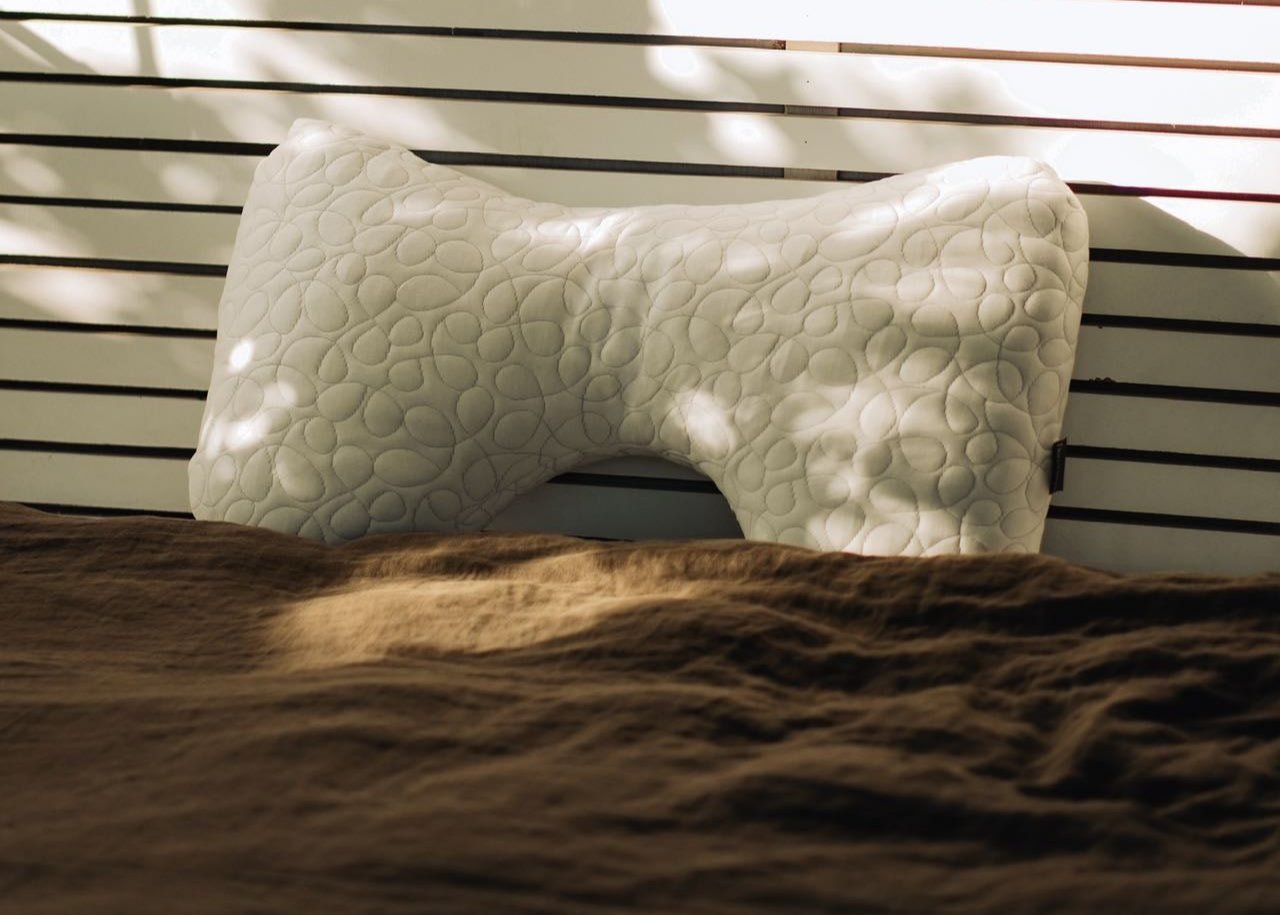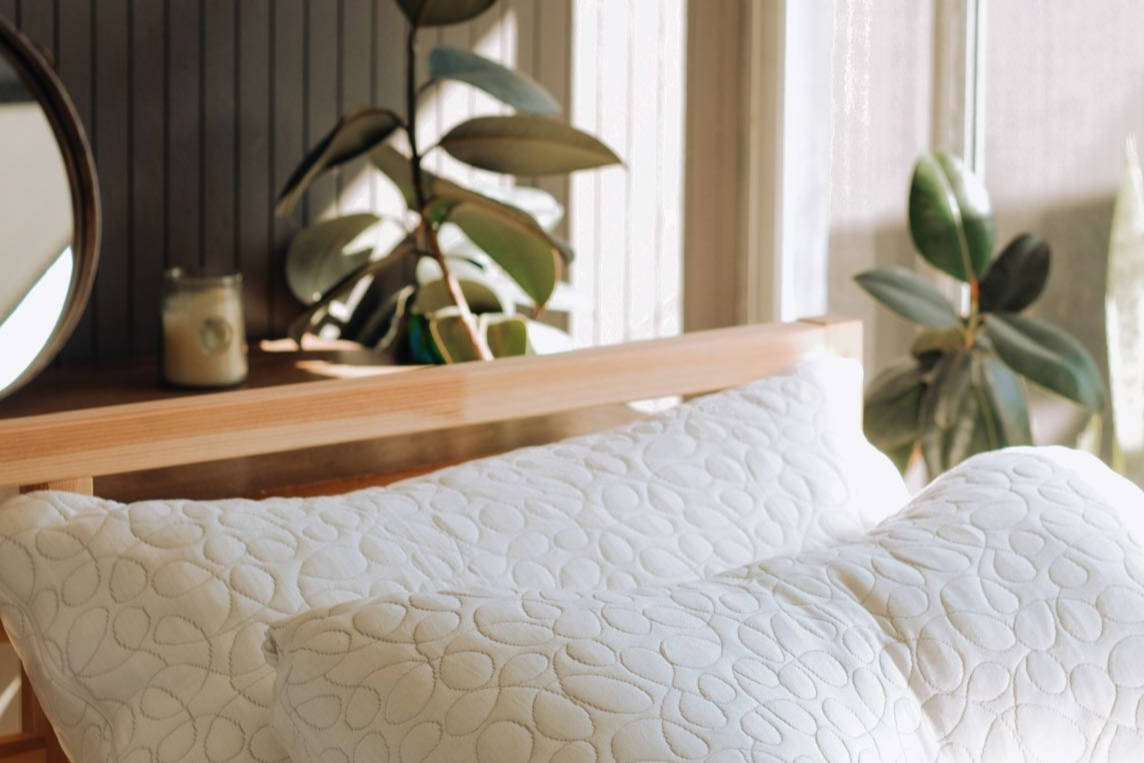Eco-Friendly Pillows: Sustainable Options for Better Sleep
These days, many of us are looking to make more environmentally conscious choices – and that extends to the bedroom. Eco-friendly pillows are those made with natural, organic, or sustainable materials and produced without a slew of harmful chemicals. Considering we spend hours each night face-planted on our pillows, it makes sense to choose one that’s not only comfortable but also healthier for us and the planet. In this article, we’ll explore what makes a pillow “eco-friendly,” the types of sustainable materials available, and the benefits of switching to a greener pillow for both your sleep quality and peace of mind.
Natural and Organic Materials
The hallmark of an eco-friendly pillow is the use of natural, renewable materials instead of synthetic foams or polyester derived from petroleum. Common sustainable fills include:
Organic Cotton
Pillows can be filled with cotton batting or have thick woven cotton fill. Organic cotton is grown without toxic pesticides or synthetic fertilizers, making it healthier for the environment and farmers. It’s breathable and hypoallergenic. Often, even if cotton isn’t the main fill, you’ll see pillow covers made from organic cotton fabric.
Organic Wool
Sourced from sheep that are raised humanely and without harmful chemicals (and the wool processed without harsh scouring agents). Wool fill pillows are great at regulating temperature and resisting mold and dust mites naturally. Look for terms like “eco-wool” or certified organic wool.
Natural Latex
Made from the sap of rubber trees, natural latex foam is a more sustainable alternative to memory foam (which is polyurethane). Latex pillows (especially those with GOLS-certified organic latex) contain no synthetic additives. They are durable, resistant to dust mites, and give a nice balance of support and bounce. The rubber trees continue to grow and produce latex for many years, making it a renewable resource.
Buckwheat Hulls
These are the outer shells of buckwheat seeds – typically a byproduct of food production. Instead of waste, they become an all-natural pillow fill. Buckwheat pillows are completely plant-based, biodegradable, and adjustable to your comfort. Plus, they last for years with minimal degradation.
Kapok Fiber
Kapok is a silky fiber harvested from the seed pods of the kapok tree (also called the Ceiba tree). It’s often touted as a vegan alternative to down because it’s light and fluffy. Kapok trees grow wild in tropical forests and don’t need fertilizers or chemicals, so it’s an eco-friendly, sustainable resource. Kapok pillows are soft yet supportive and 100% natural.
Other examples are materials like bamboo fiber (often bamboo-derived viscose, which has some eco benefits like quick renewability of bamboo, though its processing can involve chemicals unless done in a closed-loop system), or plant-based foams (some newer memory foams partially replace petrochemicals with soy or castor oil – not perfect, but a step in a greener direction).
Also, an eco pillow will usually have a cover made from organic fabric – typically organic cotton or bamboo, or even hemp or linen. The key is they’re free from harmful dyes and finishes. As one source notes, “the best organic pillows are made with natural materials like bamboo, cotton, wool, or latex, meaning they’re free of harsh chemicals and pollutants”. Being organic also generally means the materials are hypoallergenic and non-toxic, which leads us to the next point.
No Harmful Chemicals or Synthetics
Conventional pillows, especially memory foam or polyester ones, can come with a side of chemicals. These might include:
Volatile Organic Compounds (VOCs)
emitted from polyurethane foams (memory foam) as off-gassing. That “chemical smell” new pillows have sometimes is VOCs like formaldehyde, toluene, etc., which you’d rather not inhale.
Flame Retardants
Many foam pillows are treated with chemical flame retardants (PBDEs, chlorinated tris, etc.) to meet flammability laws. These chemicals can be toxic, linked to hormone disruption and other health issues, and they persist in the environment.
Pesticide Residues
Non-organic cotton is a pesticide-intensive crop; traces can remain in the cotton fill or fabric.
Bleaches and Dyes
Conventional pillows may have covers bleached with chlorine and dyed with azo or heavy metal-containing dyes.
Eco-friendly pillows avoid these by using natural fibers and materials processed with minimal chemical intervention. For instance, an organic pillow won’t have formaldehyde finishes or flame retardant sprays. Wool is naturally flame-resistant, so wool pillows can meet fire safety standards without added chemicals. Latex and buckwheat also typically don’t need added retardants.
Also, many eco pillows proudly carry certifications like GOTS (Global Organic Textile Standard) for fabrics and fills like cotton or wool, GOLS (Global Organic Latex Standard) for latex, or OEKO-TEX Standard 100 which ensures the finished product is free from harmful levels of numerous chemicals. These certifications give consumers assurance of purity.
Why does this matter? If you have allergies, asthma, or sensitive skin, a chemical-free pillow can be a game-changer. One report mentions how standard pillows and bedding can off-gas and cause respiratory irritation or skin rashes. Conversely, “organic pillows are made from natural materials...free of harmful toxins” and are much more eco-friendly and healthy. Plus, think of the environmental impact: fewer toxins in manufacturing means less pollution in water and soil, and safer conditions for workers. It’s a win-win.
Sustainable and Ethical Production
Eco-friendly also extends beyond the pillow’s composition to how it’s made. Sustainable pillows often come from companies paying attention to their supply chain and carbon footprint. Some aspects include:
Ethical Sourcing
Materials like organic cotton or wool are often sourced from farms that prioritize sustainable agriculture and fair labor. For instance, organic wool might come from sheep raised on small farms with good grazing practices. Look for Fair Trade certifications or company info on sourcing.
Renewable Resources
Many eco materials are renewable annually (cotton, buckwheat, kapok) or encourage sustainable forestry (latex rubber trees, which can be tapped for years without cutting the tree down). For example, kapok trees don’t need replanting each year; they naturally regenerate their pods.
Biodegradable or Recyclable
A big environmental plus – at the end of its life, an all-natural pillow (cotton, wool, buckwheat, etc.) is typically biodegradable or compostable. Even natural latex is biodegradable over time (it comes from tree sap, after all). In contrast, synthetic foam or polyfill pillows end up in landfills for potentially hundreds of years. Using pillows made of sustainable, plant-based materials reduces waste.
Reduced Energy and Water Use
Producing organic fibers often uses less energy and water than producing synthetics or conventionally grown fibers. For example, organic cotton farming often uses water more efficiently and relies on rainwater more than irrigated water compared to conventional cotton.
No “Forever Chemicals”
As referenced in one extended note, many conventional home products have PFAS (perfluorinated chemicals, e.g., in stain-resistant coatings) that last indefinitely in the environment. Eco pillows avoid such coatings. This is better for the planet (and you).
Longevity
A well-made natural pillow can last as long as or longer than a polyfill one, which means fewer replacements (less consumption). For instance, a high-quality latex pillow might last 5+ years. Buckwheat pillows can have hulls replaced and shells composted, extending life.
From an ethical stance, organic and natural pillow companies tend to be smaller, often focusing on fair labor (some pillows are even handmade) and supporting local economies or traditional craft (like hand-sorted wool, or pillows sewn in small batches). So buying an eco pillow can support those values too.
All of this is encapsulated by saying “green pillows are better for you and the planet.” As one source pointed out, not only are organic pillows free from chemicals that could harm your health, but they are also made from sustainable materials that require less energy and resources to produce. With roughly a third of our life spent in bed, upgrading to an eco-friendly pillow and bedding set is a significant step in reducing our daily chemical exposure and environmental impact.
Benefits of Sleeping on Eco-Friendly Pillows
Aside from the environmental and health factors, how do these pillows feel and perform? Quite well, actually:
Comfort
Many sleepers find natural materials like latex, wool, and down alternatives like kapok to be extremely comfortable. Wool and cotton breathe well, helping keep you cool. Latex offers great support for neck alignment. Buckwheat hulls are adjustable to your shape and sleep cool due to airflow. So you might improve your sleep quality by finding a pillow that both feels good and aligns well.
Hypoallergenic
Organic pillows are often recommended for allergy sufferers. They lack the irritants and chemical residues of conventional pillows. Materials like wool are naturally dust mite resistant (dust mites don’t like the dry, breathable environment wool provides). Buckwheat hulls and latex are also not hospitable to mites. And without chemical additives, people with sensitive sinuses or skin often breathe and feel easier. A quote from a retailer: “because they’re organic...they’re also hypoallergenic, great for people with allergies or sensitivities”.
Peace of Mind
There’s a certain mental comfort in knowing the product you lay your head on is non-toxic and sustainably made. It can literally help you sleep better at night! You won’t worry about inhaling fumes or contributing to pollution. For some, this reduced stress (conscious or subconscious) is a benefit.
Quality and Durability
Eco pillows can be high quality (they often are handcrafted or made in smaller batches with care). They might cost a bit more upfront, but they tend to last. Natural latex, for example, doesn’t flatten as quick as polyfoam. Wool can be re-fluffed and lasts years, and down or feather (if sustainably sourced) can actually last a decade if cared for. This durability means you won’t need to replace as often, which is economically and environmentally positive.
Cooler Sleep
Many natural fills are better at moisture-wicking and temperature regulation. Wool can absorb a lot of moisture without feeling wet and release it, keeping you cool and dry. Buckwheat hull pillows allow air to circulate, preventing heat buildup around your head. Latex has an open-cell structure and often comes with pinholes for ventilation. Compare that to memory foam, which often traps heat. So an eco pillow might also solve overheating issues at night.
In summary, eco-friendly pillows deliver on comfort while also aligning with healthier living. They let you “green” your sleep routine without sacrificing support or coziness. As one might put it: “we spend about a third of our lives asleep, so it makes sense to create the most healthy and eco-friendly sleep environment possible.” Choosing an organic or natural pillow is a key part of that.
Making the switch to an eco-friendly pillow means opting for natural, sustainable materials over synthetic foams or fibers. From organic cotton and wool to natural latex and buckwheat, these pillows offer comfort without the chemical baggage. You’ll be avoiding potential toxins (no more wondering what that chemical smell is in your pillow) and reducing your environmental footprint. Eco pillows often come from brands that value ethical production, so you’re supporting better practices too. And let’s not forget the personal perks: improved breathability, hypoallergenic properties, and just the sheer peace of mind of sleeping on something “clean” and green. In the end, an eco-friendly pillow is an investment in both your health and the planet’s health – a small change that can make your nights (and mornings) a whole lot better. Sleep tight, knowing you’ve made a sustainable choice. Commit to healthier, sustainable sleep with eco-friendly pillow options. Discover Donahöna’s Bundle Collection, made from breathable, natural bamboo fibers—comfortable for you and kind to the planet.










Leave a comment
This site is protected by hCaptcha and the hCaptcha Privacy Policy and Terms of Service apply.